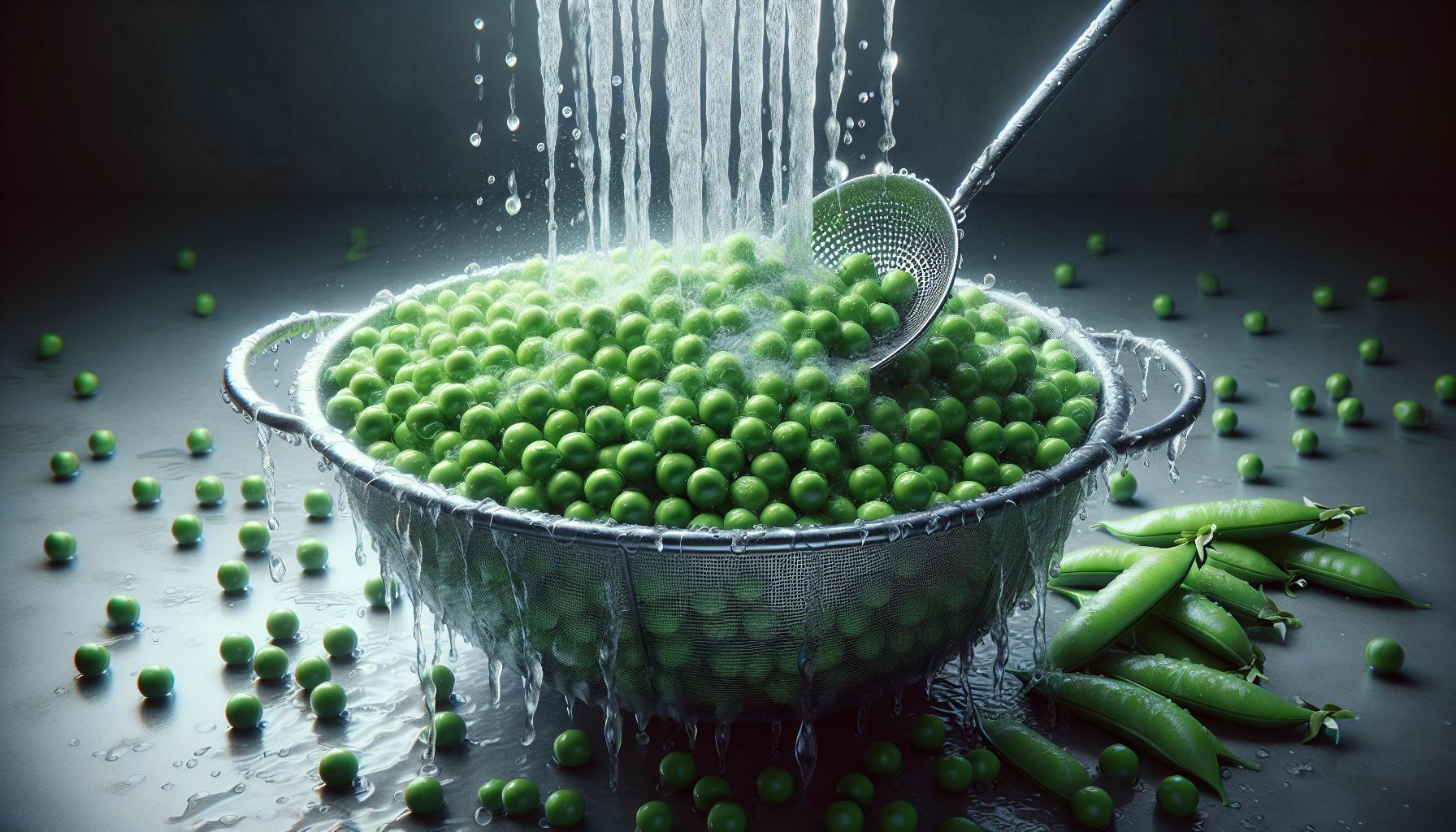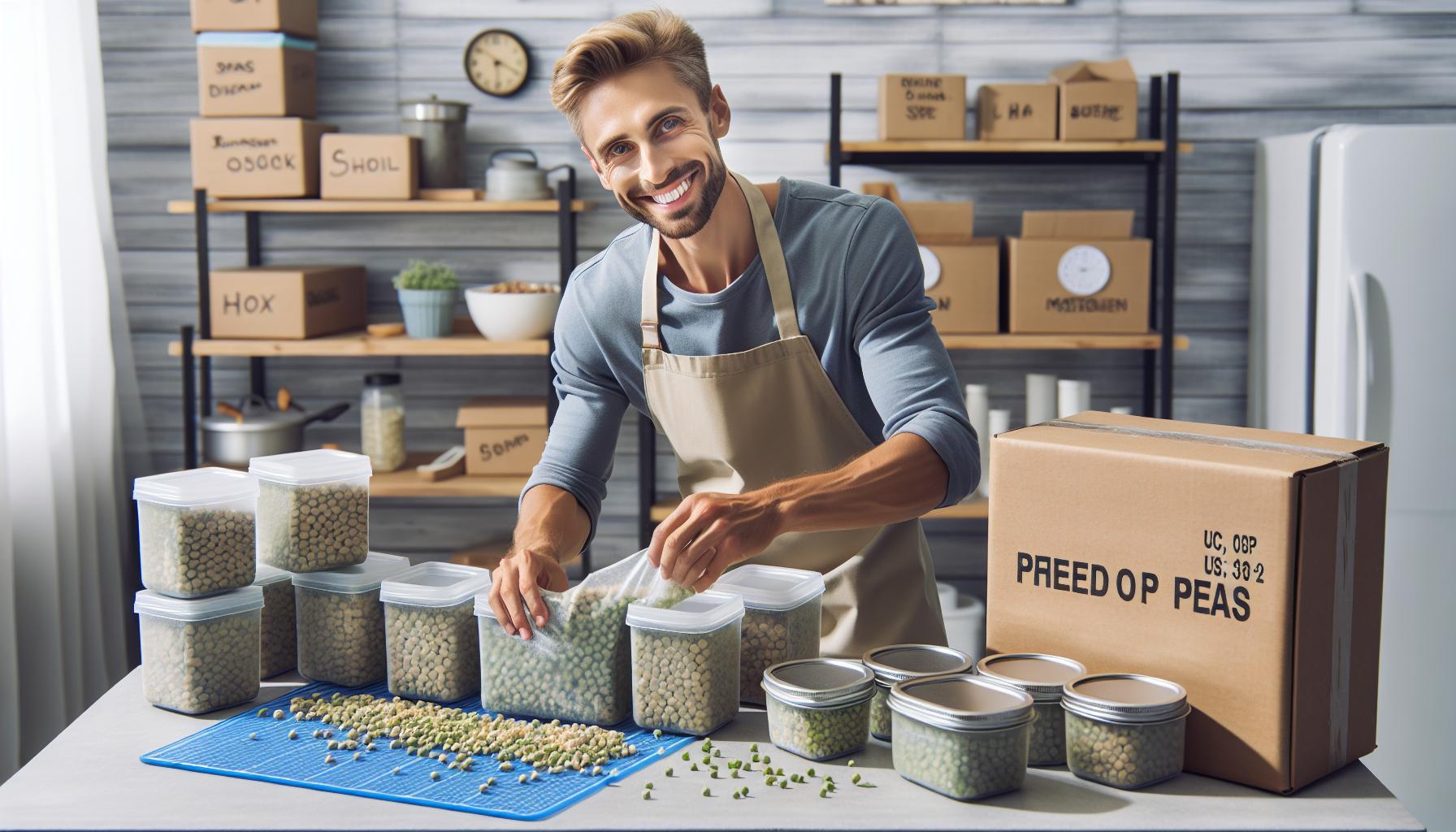Preserving the fresh taste of field peas through freezing allows gardeners and food enthusiasts to enjoy this Southern delicacy year-round. When properly frozen field peas maintain their nutritional value texture and flavor making them a versatile ingredient for future meals.
Field peas can be frozen by blanching them first then cooling rapidly packaging in airtight containers and storing at 0°F (-18°C). This process preserves their quality for up to 12 months when done correctly.
The key to successfully freezing field peas lies in timing and technique. Whether working with freshly harvested peas from the garden or farmer’s market finds following the right steps ensures these legumes retain their garden-fresh taste through the winter months. The process isn’t complicated but attention to detail makes all the difference in the final quality of the frozen peas.
“1. Shell and clean peas
Field peas require proper shelling and cleaning before freezing. Open each pod by snapping off the stem end and pulling the string toward the tip. For non-stringy varieties, split the pods with fingers to release the peas.
Here’s what to do:
- Remove peas from pods using a gentle squeezing motion
- Collect shelled peas in a large bowl
- Discard empty pods and any damaged peas
- Rinse peas under cold running water
- Pick out remaining debris or plant material
Pro Tip: Shell peas over a clean white cloth to spot any discolored or damaged peas easily.
A 5-pound batch of unshelled field peas typically yields:
| Amount | Result |
|---|---|
| 5 lbs unshelled | 2 lbs shelled |
| 2 lbs shelled | 4 cups frozen |
The cleaning process removes dirt particles interfering with proper freezing. Place rinsed peas in a colander lined with cheesecloth to drain excess water before moving to the blanching step.
2. Rinse thoroughly

Washing field peas removes dirt particles dirt through a multi-step rinsing process. Place the shelled peas in a large colander under cold running water. Gently swirl the peas with your hands to ensure even cleaning coverage. Transfer the peas to a large bowl filled with cold water.
The peas need three distinct rinses:
- First rinse: Removes surface debris soil particles
- Second rinse: Eliminates any remaining dirt
- Third rinse: Provides final cleaning check
Let the peas settle in the bowl between rinses. Any debris sinks to the bottom while good peas float near the top. Scoop the clean peas out with a slotted spoon rather than draining to avoid recontaminating them with settled debris.
A thorough rinse prepares the peas for blanching. Drain the cleaned peas in a colander before moving to the next step. Check for any damaged or discolored peas during the final drain.
| Rinsing Step | Water Temperature | Duration |
|---|---|---|
| Initial Rinse | Cold | 30 seconds |
| Second Rinse | Cold | 30 seconds |
| Final Rinse | Cold | 30 seconds |
3. Pat dry completely

Proper drying prevents ice crystals from forming on field peas during freezing. Place the cooled peas in a single layer on clean kitchen towels or paper towels. Gently roll or pat the peas with additional towels to remove excess moisture. For optimal results, let the peas air dry for 15-20 minutes.
Key drying techniques:
- Use lint-free kitchen towels to prevent fibers from sticking
- Spread peas in a single layer to ensure even drying
- Pat gently to avoid crushing the peas
- Replace damp towels with fresh ones as needed
Important: Thoroughly dried peas remain separate when frozen instead of clumping together. Test the dryness by touching the peas – they should feel dry to the touch but not completely dehydrated. Transfer the dried peas to a rimmed baking sheet lined with parchment paper for the next freezing step.
4. Pack in freezer containers

Arrange dried field peas in airtight freezer containers or freezer bags, leaving 1/2 inch of headspace for expansion. Pack the peas loosely in rigid containers or freezer-grade plastic bags to prevent crushing. Here’s the optimal packing process:
For Containers:
- Fill containers 90% full to allow for expansion
- Remove air pockets by gently tapping container on counter
- Secure lids tightly to prevent freezer burn
- Label with date using permanent marker
For Freezer Bags:
- Fill bags leaving 1/2 inch headspace
- Press out excess air before sealing
- Flatten bags for efficient storage
- Double-bag for extra protection
- Spread peas on parchment-lined baking sheet
- Freeze for 2 hours until solid
- Transfer to storage containers
- Place in freezer immediately
This method prevents peas from clumping together, making it easier to remove small portions as needed. Store packed containers in the back of the freezer where temperature remains most consistent.
5. Remove air and freeze
“
Pack the dried peas in freezer-safe containers or bags, leaving 1/2 inch of headspace for expansion. A vacuum sealer offers the most effective method for removing air, creating an airtight seal that prevents freezer burn. For freezer bags, press out excess air using the water displacement method:
- Fill a large bowl with water
- Place the filled bag into water up to the seal line
- Push remaining air bubbles out
- Seal the bag while submerged
Label each container with:
- Contents
- Amount
- Date packed
Store packed peas in the back of the freezer at 0°F (-18°C) where temperature remains most consistent. Position containers flat to maximize space usage. Flash freeze individual peas first by spreading them on a parchment-lined baking sheet for 2 hours before transferring to storage containers to prevent clumping.
| Container Type | Storage Duration | Temperature |
|---|---|---|
| Vacuum Sealed | 12-14 months | 0°F (-18°C) |
| Freezer Bags | 8-10 months | 0°F (-18°C) |
| Plastic Containers | 6-8 months | 0°F (-18°C) |



